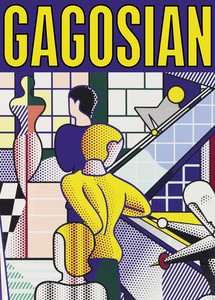
Now available
Gagosian Quarterly Summer 2024
The Summer 2024 issue of Gagosian Quarterly is now available, featuring a detail of Roy Lichtenstein’s Bauhaus Stairway Mural (1989) on the cover.
Summer 2024 Issue
Michael Ovitz, cofounder of Creative Artists Agency (CAA), looks back to 1989, the year he and the architect I. M. Pei commissioned Roy Lichtenstein to create the Bauhaus Stairway Mural for the then new CAA Building in Los Angeles. Through the experience of working with Lichtenstein, Ovitz formed a meaningful friendship with the artist.
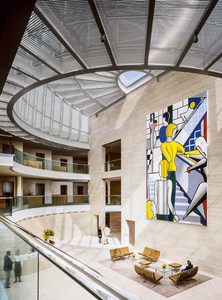
Bauhaus Stairway Mural, 1989, in the lobby of the Creative Artists Agency, Beverly Hills, California, 1989. Artwork © Estate of Roy Lichtenstein. Photo: © Paul Warchol Photography Inc.
Bauhaus Stairway Mural, 1989, in the lobby of the Creative Artists Agency, Beverly Hills, California, 1989. Artwork © Estate of Roy Lichtenstein. Photo: © Paul Warchol Photography Inc.
I spent one year trying to convince I. M. Pei to design the CAA Building. It was one of the most intense business challenges I ever encountered: I was trying to talk a world-class architect into working on a small building for a little-known entertainment company in Los Angeles, after he had just finished the 1,000,000-square-foot Bank of China Tower in Hong Kong. I was lucky enough to persuade him and in our initial design discussion we agreed that there was only one artist to paint the 30-foot-high entrance wall in the atrium. It needed bold color, relatable imagery, some connection to the theme of communication, and be a second Wow!, with the first one being the building.
A tall order.
Roy was the only choice.
I called Leo Castelli, Roy’s dealer, and asked to see him for ten minutes to discuss something about one of his artists. He kindly and quickly received me and I brought in a small model of the building to educate him on the site.
I told him that Roy was our first, second, and third choice and fortunately he loved the idea. He immediately put me into a meeting with Roy and Dorothy at their studio.
We agreed on the size of the work, but I told Roy to do whatever he felt comfortable with that signaled communication. He had “final cut,” a term directors use to make sure they have the last word on their film. For some reason, Leo put a clause in that if I didn’t like the maquette, I could withdraw. I never really remembered that and it wasn’t an option ever under consideration.
This started a journey for me as one of the best creative experiences and friendships I ever had the honor of having. I spent a lot of social time both with Roy alone and with Roy and Dorothy together, at many lunches and dinners with them and our other artist friends. I remember an epic lunch at the Odeon in New York with Roy, Dorothy, Chuck Close, Joel Shapiro, and others. I was in heaven.
Some months later, Roy called and asked me to come by. I showed up and a picture about five feet by four feet was neatly sitting on an easel, covered up. Roy totally ignored it and we talked about the work he was presently painting. After about an hour, I stood up and said I had to leave for another meeting. He casually stopped me and said, “So, do you want to see it?” Of course I couldn’t wait. He walked toward the easel and as I did too, he pulled the cloth cover off in one fell swoop, with intentional drama, like a magician unfolding his trick in an act.
As I was standing there stunned, looking at this image of Oskar Schlemmer’s Bauhaus Stairway (1932), totally modernized and in sixteen colors, Roy said, “Would you like to make any changes?”
I started laughing uncontrollably and then so did he. We both laughed for five minutes nonstop like two little kids. When it came to an end, I said, I’m canceling my meeting, let’s go to lunch. We went to some place in the Meatpacking District that he loved and laughed all through lunch about the fact that he’d asked me, someone without talent, if I wanted to change something in the drawing. I thought it was the ultimate offer—the idea that I might have any criticism of this modern masterpiece was so absurd that it became a common touch point for us in the future.
We flew Roy and Dorothy out to Beverly Hills and put them up at a great hotel and took them out consistently and gave multiple dinner parties for them. The company was their family in LA and the entertainment business embraced and respected them both.
Roy worked in the building for six weeks and we all watched the most unique example of creativity exploding daily in front of our eyes. I remember that Bob Rauschenberg, another friend of both of ours, came to see Roy work and Roy invited him up on the scaffolding and asked him to paint a section. Wow, what a thrill to watch two greats working together in our home, interacting with each other on a piece of art history.
The day Roy was finished, he asked all the staff to gather in the atrium and 400 or more people who were lucky enough to be in their offices gave him an ovation as he signed his name to the bottom.
Roy Lichtenstein: Bauhaus Stairway Mural, Gagosian, New York, September 9, 2023–July 19, 2024

The Summer 2024 issue of Gagosian Quarterly is now available, featuring a detail of Roy Lichtenstein’s Bauhaus Stairway Mural (1989) on the cover.

Alice Godwin and Alison McDonald explore the history of Roy Lichtenstein’s mural of 1989, contextualizing the work among the artist’s other mural projects and reaching back to its inspiration: the Bauhaus Stairway painting of 1932 by the German artist Oskar Schlemmer.
In celebration of the centenary of Roy Lichtenstein’s birth, Irving Blum and Dorothy Lichtenstein sat down to discuss the artist’s life and legacy, and the exhibition Lichtenstein Remembered curated by Blum at Gagosian, New York.
Gagosian and the Art Students League of New York hosted a conversation on Roy Lichtenstein with Daniel Belasco, executive director of the Al Held Foundation, and Scott Rothkopf, senior deputy director and chief curator of the Whitney Museum of American Art, New York. Organized in celebration of the centenary of the artist’s birth and moderated by Alison McDonald, chief creative officer at Gagosian, the discussion highlights multiple perspectives on Lichtenstein’s decades-long career, during which he helped originate the Pop art movement. The talk coincides with Lichtenstein Remembered, curated by Irving Blum and on view at Gagosian, New York, through October 21.
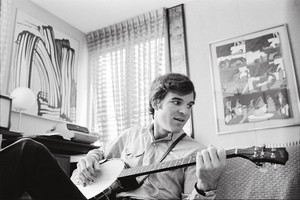
Actor and art collector Steve Martin reflects on the friendship and professional partnership between Roy Lichtenstein and art dealer Irving Blum.
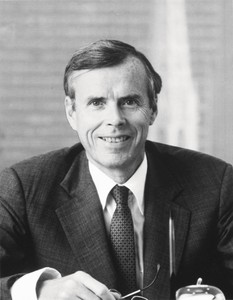
Jacoba Urist profiles the legendary collector.
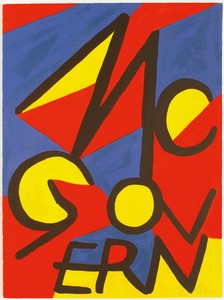
Against the backdrop of the 2020 US presidential election, historian Hal Wert takes us through the artistic and political evolution of American campaign posters, from their origin in 1844 to the present. In an interview with Quarterly editor Gillian Jakab, Wert highlights an array of landmark posters and the artists who made them.
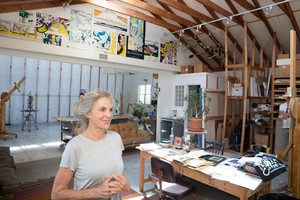
Dorothy Lichtenstein sits down with Derek Blasberg to discuss the changes underway at the Lichtenstein Foundation, life in the 1960s, and what brought her to—and kept her in—the Hamptons.
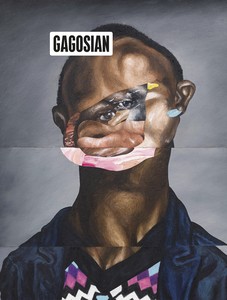
The Fall 2019 issue of Gagosian Quarterly is now available, featuring a detail from Sinking (2019) by Nathaniel Mary Quinn on its cover.
Jenny Saville reveals the process behind her new self-portrait, painted in response to Rembrandt’s masterpiece Self-Portrait with Two Circles.
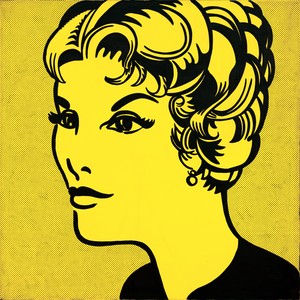
Gillian Pistell examines Roy Lichtenstein’s aesthetic developments in the years 1961 to 1965.
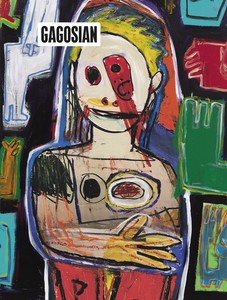
The Winter 2018 issue of Gagosian Quarterly is now available. Our cover this issue comes from High Times, a new body of work by Richard Prince.